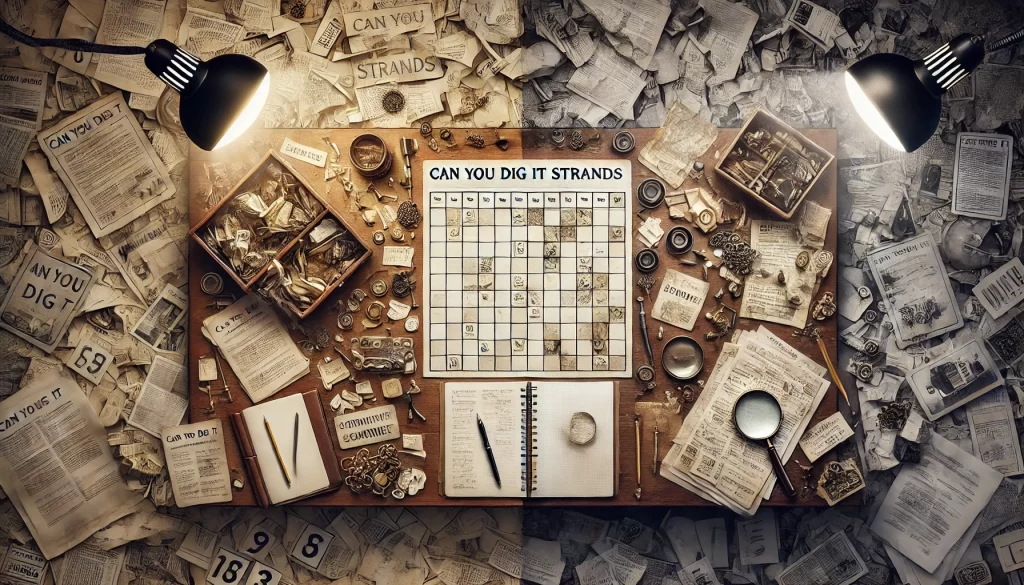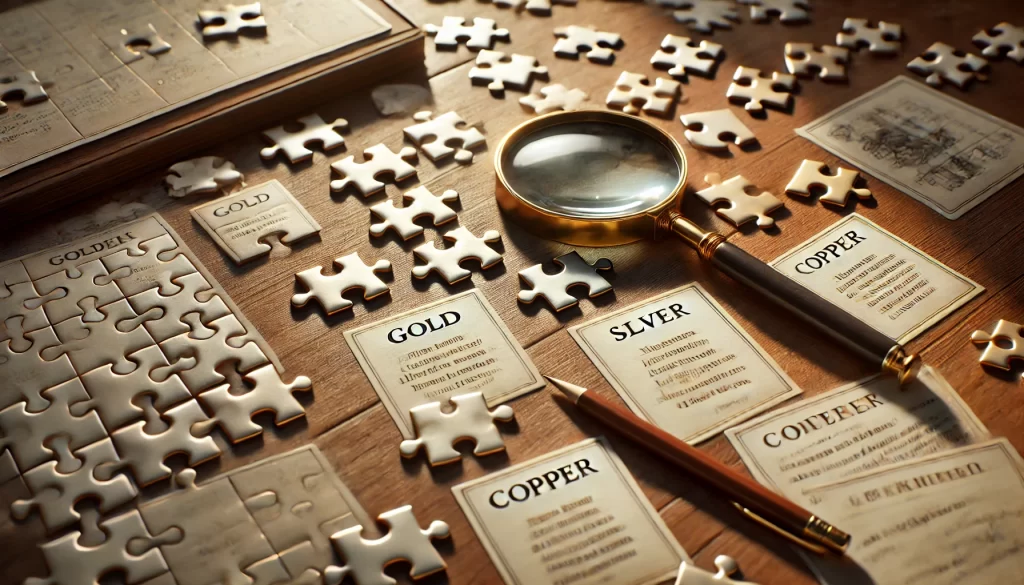Table of Contents
Are you ready to dive into the exciting “Can You Dig It Strands” world? If you’ve encountered this brain-bending puzzle, you’re likely searching for the right approach to crack it. Whether you’re a beginner or a puzzle-solving pro, this article is designed to provide you with expert strategies, hints, and answers to help you conquer it. “Can You Dig It Strands” might seem overwhelming at first, but with the right mindset and guidance, you’ll be able to solve it while sharpening your problem-solving skills.
What is “Can You Dig It Strands”?

“Can You Dig It Strands” is a word-based puzzle that challenges you to find hidden connections between clues. In this puzzle, you typically search for words or phrases related to a particular theme. Often, the puzzle revolves around finding words associated with items that can be “dug up,” such as precious metals or elements like gold or silver. The trick lies in deciphering these clues and figuring out how they all tie together.
This puzzle, often seen in NYT Strands, tests your ability to identify patterns and understand subtle hints, making it an excellent challenge for those who enjoy mental exercises. The more you practice solving it, the sharper your cognitive skills become.
Also Read: Taylor Swift Coloring Pages: Uncover the Magic of Imagination!
How to Solve “Can You Dig It Strands”

Let’s explore some key strategies to help you solve the “Can You Dig It Strands” puzzle. If you find yourself stuck, these tips will guide you to the solution:
Understand the Theme
Every puzzle has a theme, and “Can You Dig It Strands” is often related to items that can be found underground. For instance, metals like gold, silver, and arsenic are frequent answers. Identifying the theme early helps narrow down your search for the correct answers. Ask yourself: “What connects all these clues?” Once you understand the theme, solving the rest of the puzzle becomes easier. This technique is frequently seen in NYT Strands Today.
Break Down the Puzzle
Don’t try to solve the puzzle all at once. Break it down into smaller pieces by analyzing each clue individually. Focus on one strand at a time and write down any possible answers. Then, start connecting the strands that make sense together. This step-by-step approach will help you avoid getting overwhelmed. If you visit sites like Strands Today, you’ll find examples of how clues are logically broken down.
Find Patterns
Many puzzles rely on patterns, whether repeating letters, word shapes, or thematic connections. If you notice similar words popping up, they could be part of a larger pattern that will help you solve the puzzle. For example, if the puzzle theme is metals, start by identifying words related to that category, such as “gold,” “silver,” or “copper.” This approach is commonly used when solving a NYT Strands Spangram.
Hints to Crack the Puzzle
Here are some specific hints that can make solving “Can You Dig It Strands” easier:
- Look for Repeated Clues
Pay attention to any repeated or similar words within the puzzle. These could point you toward the theme. For instance, if the word “metal” or “mineral” appears in multiple clues, it’s a strong sign that the answers are related to those items. - Use Process of Elimination
If you’re stuck on a particular clue, try eliminating answers that don’t fit. This method narrows down your options and increases your chances of guessing correctly. For example, if you know the puzzle revolves around metals, you can immediately eliminate non-metal answers. - Don’t Overthink It
Sometimes the simplest answers are the correct ones. Avoid overcomplicating the puzzle by assuming the answers are too obscure. Start by considering the most obvious answers before diving into more complex options.
Also Read: Can You Dig It Strands: Hints & Answers
Step-by-Step Solution Approach
Let’s break down the solution approach into a clear, step-by-step process:
- Start with Easy Clues
Begin with the clues that are straightforward and easy to solve. This will give you confidence and set a strong foundation for solving the rest of the puzzle. For instance, if you recognize that “gold” is a possible answer, place it into the puzzle and see how it fits with the other clues. - Build on Your Success
After solving the easier clues, use them as building blocks for the more difficult ones. Many puzzles, including NYT Strands, have interconnected answers. Once you solve one clue, it often makes the next one easier to figure out. - Organize the Clues
If the puzzle involves a large number of clues, it helps to organize them by theme or category. This can make it easier to see connections that you might otherwise miss. Grouping similar words together also helps to reduce confusion. You can see examples of this method on sites like Strands Game. - Test Multiple Solutions
Don’t be afraid to try different solutions. Puzzle-solving is often a matter of trial and error. If one solution doesn’t fit, move on to another. The process of elimination is a powerful tool in your puzzle-solving arsenal.
Advanced Puzzle-Solving Techniques
Once you’ve mastered the basics, here are some advanced techniques to help you solve the toughest puzzles:
- Reverse Engineer the Puzzle
If you already know one or two answers, try working backward to figure out how those answers connect to the rest of the puzzle. This reverse engineering technique can help unlock tricky sections. - Work with a Friend
Solving puzzles with someone else can offer a fresh perspective. Sometimes, another person can spot patterns or solutions that you’ve overlooked. Collaboration is a great way to speed up the process, especially when playing a new Strands Board. - Take Breaks
If you find yourself stuck, take a short break. Stepping away from the puzzle allows your brain to reset, and you’ll often come back with fresh insights that help you solve the remaining clues.
Avoiding Common Pitfalls
While solving “Can You Dig It Strands,” it’s easy to make mistakes. Here are some common pitfalls and how to avoid them:
- Overthinking Clues
It’s tempting to assume that every clue is complicated, but in reality, many answers are simple and straightforward. Don’t waste time trying to come up with an elaborate explanation when a simple one fits the clue. - Ignoring Key Hints
Always pay attention to the subtle hints embedded in the puzzle. Even small clues can lead to major breakthroughs. Don’t dismiss anything as insignificant. Sites like Strands Hint often provide crucial hints that you might otherwise overlook. - Rushing Through
Take your time with the puzzle. Rushing often leads to mistakes and missed opportunities. A steady, thoughtful approach yields better results than hurrying through each clue. Visiting Strands You can give you insight into how to pace yourself during the puzzle-solving process.


